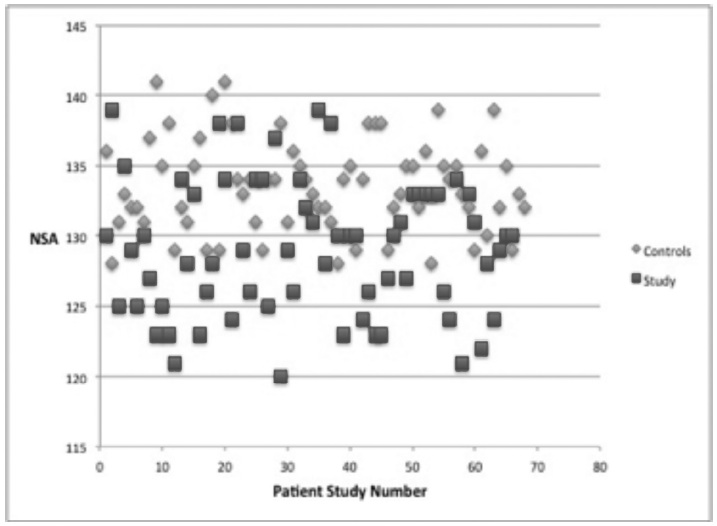
OTA 2013 Posters
Scientific Poster #21 Geriatric OTA 2013
Atypical Femur Fractures in Patients on Chronic Bisphosphonates: Does Geometry Matter?
Jennifer Hagen, MD; James Krieg, MD; Susan Ott, MD; Timothy Alton, MD;
University of Washington, Seattle, Washington, USA
Purpose: In 2004-2005, cases of “atypical” femur fractures began to be reported and linked to patients who had been on bisphosphonates for a prolonged period of time. This study is designed to evaluate the proximal femoral geometry in patients with primary osteoporosis on chronic bisphosphonate therapy. We hypothesize patients with atypical femur fractures will have more varus geometry than the controls.
Methods: The femoral neck-shaft angle (NSA), femoral neck length (FNL), and the tip of the greater trochanter to the center of the femoral head (THC) distances were measured on 35 patients with atypical femoral shaft fractures and 35 patients with primary osteoporosis on chronic bisphosphonate therapy (mean exposure 8.4 years vs. 5.4). Patients with characteristic lateral cortical thickening, stress lines, and thigh pain were included in the fractured group. Both hips were measured when available (134 total hips). All measurements were made from plain radiographs using Orthoview software.
Results: There is a statistically significant difference in the NSA of patients with atypical femur fractures and those on bisphosphonates without fracture (mean 129.11° vs 133.57°; P <0.001). While there is a large overlap among the data, 39.4% of patients in the fracture group have an NSA lower than the lowest recorded unfractured patient (Figure 1). There was not a significant difference between the FNL (68 vs 82; P <0.147) or the THC (7.48 vs 6.4; P <0.138). When the patients with completed fractures were compared to those with “incomplete” fractures (lateral cortical thickening or a stress line), there was not a significant difference between the NSAs (129.6° vs 127.78°; P <0.175).
Conclusion: There appears to be an association between varus proximal femoral geometry and the propensity for patients on chronic bisphosphonates to develop atypical femoral shaft fractures. We feel our findings add a useful clinical marker that can both help identify an “at risk” subset of this population and contribute to the growing body of knowledge attempting to quantify cause of this new entity.
Figure 1: Distribution of NSA by group.

• The FDA has not cleared this drug and/or medical device for the use described in this presentation (i.e., the drug or medical device is being discussed for an “off label” use). ◆FDA information not available at time of printing. Δ OTA Grant.